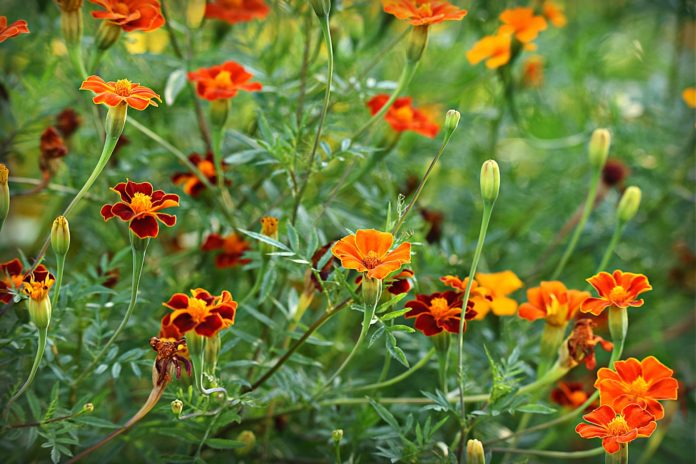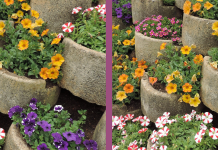We’re planting …flowers that attract birds for their nectar or seeds. Sunbirds love indigenous wild dagga (Leonotis Leonurus), aloes, strelitzia, Cape honeysuckle, proteas, red hot pokers and watsonia. The tinier sunbirds will also seek out indigenous and garden salvia, like Black and Bloom or Big Blue, for their nectar. What’s great is that all these are water-wise and heat tolerant perennials that grow in full sun to semi-shade in ordinary garden soil. There are plenty of seed loving birds too and if you let annuals like marigolds, cosmos, sunflowers, poppies and zinnias go to seed, you will be providing a natural supply of food instead of building a dependence on bird feeders. Don’t forget about perennials like gaillardia and coreopsis as well as indigenous grasses, various Eragrostis types and Anthericum saundersiae that produces lovely heads of flowers and seeds.
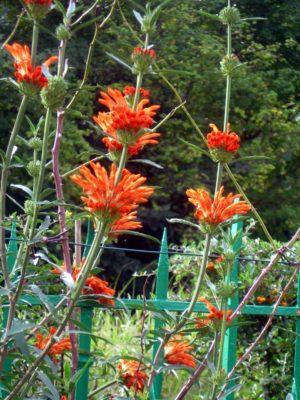
Some tips:
- Choose flowers that grow best in your local area.
- Prepare soil well before planting; adding in plenty of compost, and fertiliser.
- Plant a variety, that are different heights when mature and flower at different times to provide a constant source of nectar or seed.
- Don’t dead head and allow plants to go to seed. What the birds miss will pop up as new plants.
- Don’t use insecticides. Birds also feed on insects that are attracted to the flower.
- Include grasses with abundant seed heads. They are attractive as accents when interspersed among the flowers.

Try these…
Wild dagga (Leonotis) is available as a tall shrub with orange flowers, or as a miniature variety (70cm tall) with creamy peach-coloured flowers. Plants flower from autumn to spring, when nectar is in short supply. This evergreen shrub is frost hardy, wind and drought tolerant. The flowers show off against the rough-textured dark green leaves. It tolerates sandy soil and windy conditions. Elsewhere it grows in well-composted ordinary garden soil that drains well. Plants are happy in sun or light shade. Prune back hard after flowering.
Salvia guarantica ‘Black and Bloom’ has large flowers and dark stems that produce a pronounced black/blue effect. This shrubby perennial salvia, that grows 1.2m high and wide, handles the heat, humidity, and drought. Its flowers attract nectar lovers, and deadheading is not necessary although pinching off spent blooms produces a bushier plant. Grow it in full sun, in compost enriched soil that drains well. Once established it is water wise and will flower until the first frost. It comes back into flower in spring.
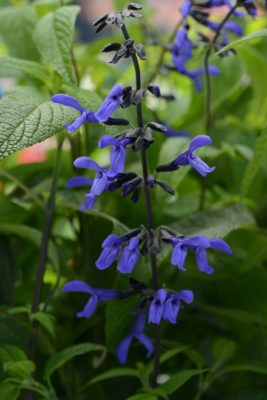
Marigolds are the hardiest flowers for sunny, summer gardens. They grow in ordinary garden soil and once established are drought and heat tolerant, providing vibrant non-stop colour. They respond well to fertilising once a month. Marigold ‘Strawberry Blonde’ is an aptly named mix of bicolour pastel pink, rose and yellow. When warmer, the flowers are yellow-pink and when it gets cooler the pink-plum tones kick in. Plants are rounded and bushy. Let plants go to seed for the birds.
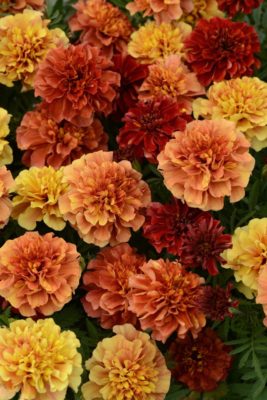
Indoor plant of the month; with its heart-shaped flowers and its long-lasting ability to survive, Anthuriums are the plant for Valentine’s month. Love might be fickle, but these plants are not. They are not needy, prefer under watering to over watering, are happy in medium to high light, and flower off and on throughout the year. A drench of liquid fertiliser once every two or three months will keep them perky. There are lots of new colours and oh-so-cute dwarf varieties. These plants are stayers.
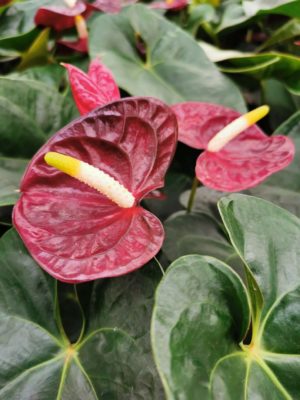
February garden tasks
- Water and mow lawns weekly. If it is very hot don’t cut the lawn too low. The longer leaves will shade the roots, so that it draws up less water.
- Remove dead flowers; this will extend the flowering period of your summer annuals and perennials.
- Pull out summer annuals, like petunias, that are over and put in some quick flowering annuals like Vinca, Marigolds and Angelonia.
- Lightly trim lavender, pelargoniums, and other bushy plants that need tidying up, as well as topiaries and hedges. Take cuttings of pelargoniums, hydrangeas, osteospermum, fuchsias, salvia, and heliotrope.
- There is still time to divide agapanthus and irises.
- Water camellias and azaleas regularly as they are setting buds for spring.
- Water containers daily and feed with a liquid fertiliser at half strength every second week.

